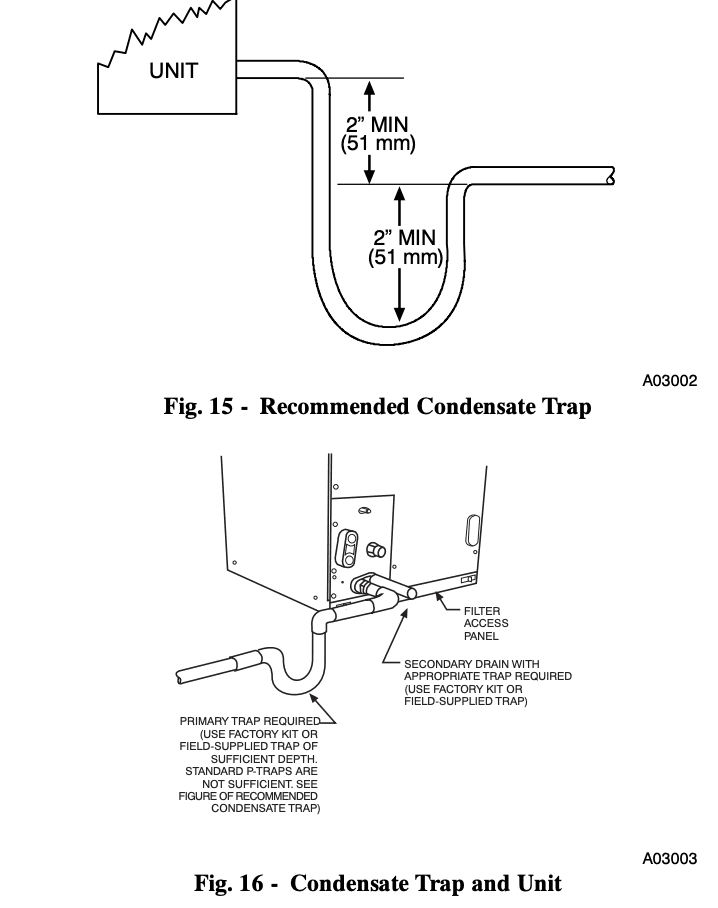4.8 1700+ Google Reviews

It's hot. Some parts of the country are reaching record-breaking temperatures right now. Although everyone is trying to stay cool, many people overlook making simple improvements to their HVAC system. For example, one thing we encounter during many of our inspections is HVAC systems missing traps. Unfortunately, a missing AC condensate trap is like leaving a window open with the AC on.
A condensate drain trap is similar to the p-trap under your sinks. In particular, the traps under your sinks fill with water to stop sewer gasses from escaping the sewer and into your home. However, a condensate trap's function or purpose depends on whether the coil is under positive or negative pressure. If it's under positive pressure (most common), it stops your conditioned air from being blown outside. Conversely, under negative pressure, it prevents condensation from pooling in your air handler, which can eventually leak and cause a mess.
No code requires a condensate trap. However, IRC 1401.1 (we use the IRC here in Virginia) requires following the manufacturer's instructions for installing "heating and cooling equipment and appliances." You will be hard-pressed to find an AC installation manual that does not require condensate drain traps. Below is a diagram from a Carrier AC installation manual as an example. Notice that it requires installing a trap on both condensate drain lines.
Yes, you need a condensate drain trap, even if you have a condensate pump. To repeat, the purpose of the condensate drain trap is usually to stop conditioned air from being blown outside. And this same logic applies if you have a condensate pump. However, without a trap, you will blow conditioned air into the pump, usually in the crawlspace, basement, or attic.
The thermal imaging video at the end of this blow demonstrates this incredibly well.
Clogged condensate drains are a regular problem. Fortunately, on a properly installed system, a clogged drain shuts off the system or diverts condensation to a secondary drain. With this in mind, you should know where your secondary drain discharges so you'll know when the primary is clogged. The secondary drain typically protrudes from your soffit or foundation wall.